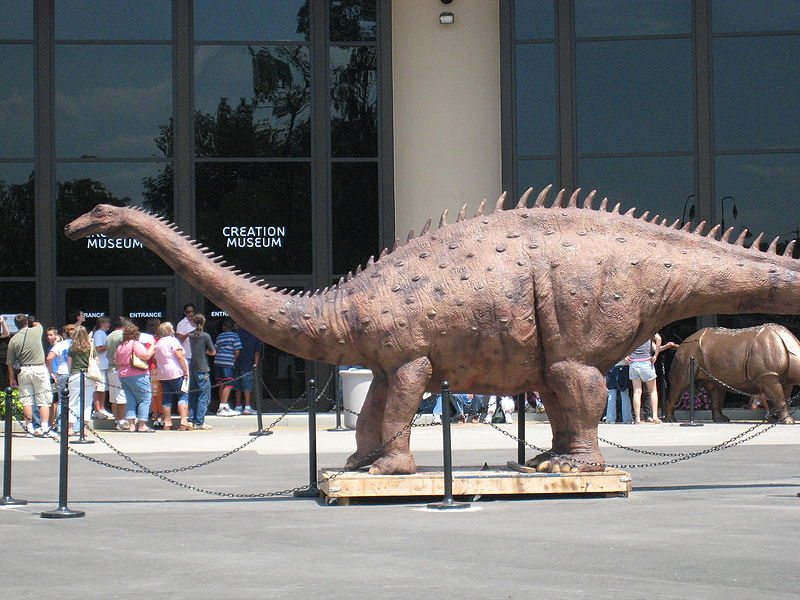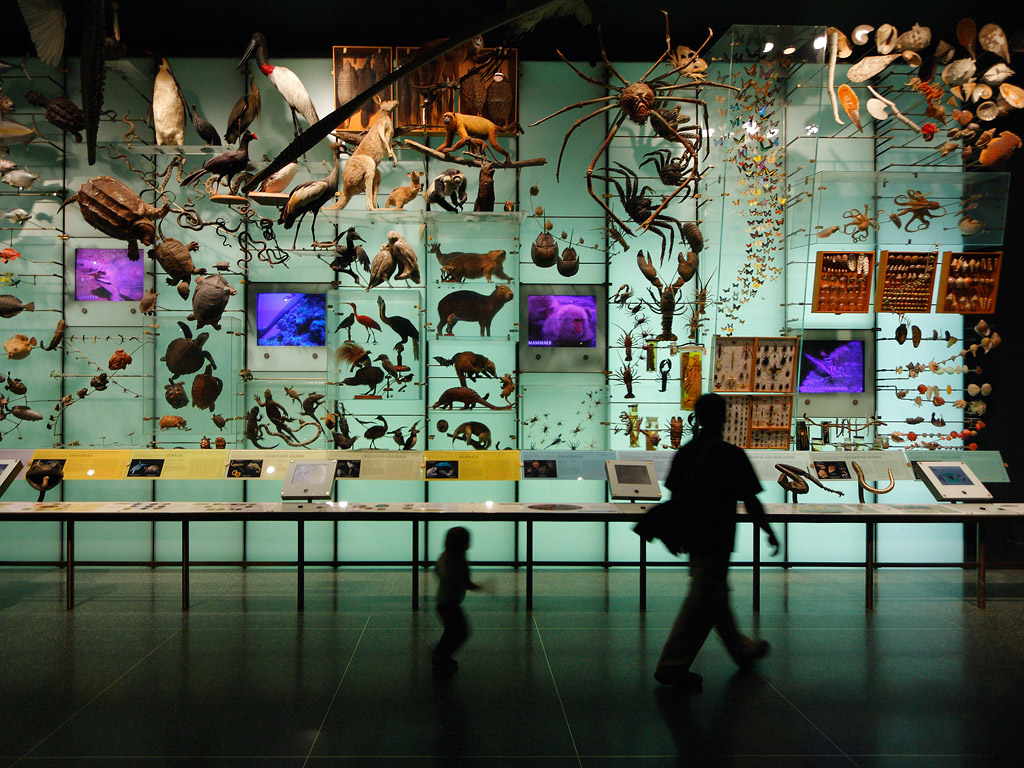Creationism helped push climate skepticism into classrooms
Science education has become a political issue, but civic engagement can still work wonders
When I moved to Texas last year, I had no idea creationism was still taught in science classrooms. I learned about its persistence when, with a group of researchers from the University of Texas, I testified for the State Board of Education. The board was "streamlining" science standards, and had incorporated language in the evolution standards directly from the creationist movement. The hearing was a firsthand glimpse at how this movement has been so successful in their efforts to make evolution controversial.
When we arrived to testify, we found others ready to speak their minds: one or two angry parents, who snapped about religion having no place in science class, and representatives of conservative thinktanks, who quietly discussed specific clauses and phrasing of the standards, never mentioning evolution or creationism explicitly. These representatives are from religiously motivated “institutes” that argue the science on evolution is not settled. In 2009, the state board agreed to their appeals to examine “all sides of scientific evidence” when teaching evolution, despite the fact that evidence does not have sides.
Growing skepticism toward science
These advocacy groups have successfully pushed this argument in several states, even while consistently losing major court cases since the founding of creation science in 1963. In fact, polls suggest many Americans still doubt natural selection. A 2015 Pew report found that, although 62 percent of Americans believe humans evolved over time, only 33 percent believe that life evolved solely through natural processes. And in 2005 only 40 percent of Americans said they accepted the idea of evolution, down from 45 percent in 1985.
Of community college biology students in Texas, 85 percent reported having spent five hours or less learning about evolution. Sixty-four percent of biology students at the University of Minnesota reported that their high school biology course taught both creationism and evolution, likely violating court rulings that rule a "balanced treatment" unconstitutional.

The Scopes 'monkey trial' of 1925
Now similar groups are trying to apply this strategy to how climate change is taught. Only 50 percent of Americans believe humans are the major cause of climate change; the lowest of all nations in a 2014 poll. According to a 2016 Science study, 71 percent of science teachers teach about recent climate change for at least one hour, and report teaching climate change for 5.5 hours on average. However, 30 percent of those teachers emphasized that climate change is due to natural causes, and 31 percent reported that they explicitly teach “both sides” of the climate change debate.
Faith, science, and politics
Since the 1920s, the creationist movement has increasingly bound its beliefs on evolution with political beliefs. Creationism is taught in American science classrooms in part because its adherents believe evolution conflicts with a literal interpretation of the Bible, and therefore conflicts with some strains of Christian ideology and belief.
Polls show climate change, similarly, has become an issue tied to ideology and partisan politics despite efforts to convince evangelical Christians climate change is a Christian issue. The best predictor of whether a teacher chose to “teach both sides” of climate change, according to the Science study, was whether they agreed with the statement “it’s not the government’s business to protect people from themselves.”

The Creationist Museum
Students and teachers report that teachers avoid controversial topics for several reasons: they fear parent reaction; receive little or no support from administrators; and feel ignorant of the subjects and whether there is scientific consensus. For all the talk of "controversy," over 95 percent of scientists prefer to teach only evolution and over 97 percent of scientists accept human-caused climate change. Yet only 45 percent of high school science teachers believed greater than 80 percent of scientists accept human-caused climate change.
In the American education system, written standards are compiled for each subject; these standards determine what goes in textbooks and how much a student is expected to learn in each grade. Schools and teachers thus design curricula to reach that end. Education officials have different methods in different states, but in each, the statewide standards are determined by Boards of Education. In 24 states, elections decide either a proportion of or the entire board; in other states the governor generally has power to appoint members. In both cases, there are little to no qualifications required.
In Texas, board members are some of the state's most powerful elected representatives, representing more people than state senators or congressional representatives. Their mission, according to the National Association of State Boards of Education, is to incorporate the concerns of the public, policymakers, business leaders, and civic groups into educational standards, graduate requirements, and accreditation and qualification requirements.
'Academic freedom'
Since the 2016 election, state leaders have proposed a new wave of bills and resolutions that would allow greater “academic freedom” in science classrooms. In practice, these would encourage teachers who are already inclined to teach dissenting and "diverse" views on what is otherwise basic consensus science.
In Florida, for instance, lawmakers passed a law last July that allows any resident to object to classroom materials. It was passed with support by the Florida Citizens Alliance, a conservative group, one of whose leaders told PBS they intend to show how textbooks have a “bias towards Islam and seldom mention Christianity," and that “Darwin’s theory is a theory, and the biblical view is a theory, and our kids should be taught both in a balanced way.”

The American Museum of Natural History
Idaho lawmakers took an even more direct approach. Last February, the state legislature voted to reject new science standards, the first since 2001, because Republican representatives disapproved of new terms about climate change and the role of human activity.
Meanwhile, a conservative thinktank named the Heartland Institute has cast its efforts nationwide. The organization published a report by what it calls the "Nongovernmental International Panel on Climate Change" (a riff on the Intergovernmental Panel on Climate Change, or IPCC, which publishes periodic reports on climate science, most recently in 2014). This “NIPCC” report, written by three scientists, argues that carbon dioxide cannot be driving global warming and that the IPCC reports, written by 831 scientists, are biased and not credible. The Heartland Institute has mailed its report to 300,000 public school teachers, along with a DVD and a letter encouraging the use of the materials in classrooms.
Getting involved
To counter these campaigns to remove science from public classrooms, we need people to show up and argue for the inclusion of climate change in school standards. Before I appeared before the Board of Education, testifying was intimidating. Afterward, I realized that by calmly stating my qualifications, the scientific evidence, and my opinion, I helped to push the board to remove some of the creationist language from its standards last year.
You can get involved with your state board, too – and it's their job to hear you out. From my experience, I learned several things:
- Be specific; often the board is only considering a specific piece of proposed language, so frame your argument around why or why not that language should be adopted. There's no need to grandstand on general principles.
- Stay calm; these meetings can draw out a lot of passions, but getting angry or loud only allows people to dismiss your ideas.
- Bring written copies of your statement, and any additional evidence or documentation for each member of the board – and for some of the office staff who supply documents and influence the board members.
- Pay attention to the time limit; often you are given only a few minutes to testify, and you will be cut off.
- Pat yourself on the back! Getting involved really pushes the boards to be better. If you are feeling hesitant and in need of support, try reaching out to a local nonprofit or community group, which might be able to help you get started.
These efforts are important: evidence suggests the best predictor of whether a high school student believes human activities cause climate change is whether their high school science teacher believes climate change exists at all – regardless of that teacher's belief in human causes. Adolescents are influenced by skepticism they perceive in their peers and parents, but with climate education, at any level, they are better than adults at evaluating evidence independent of ideology. The key, therefore, is to ensure that teachers include climate change in their lessons.
We can't let American acceptance of climate change fall further just as the effects of climate change accelerate all around us.
.jpg?auto=compress%2Cformat&crop=faces&fit=crop&fm=jpg&h=360&q=70&w=540
)
